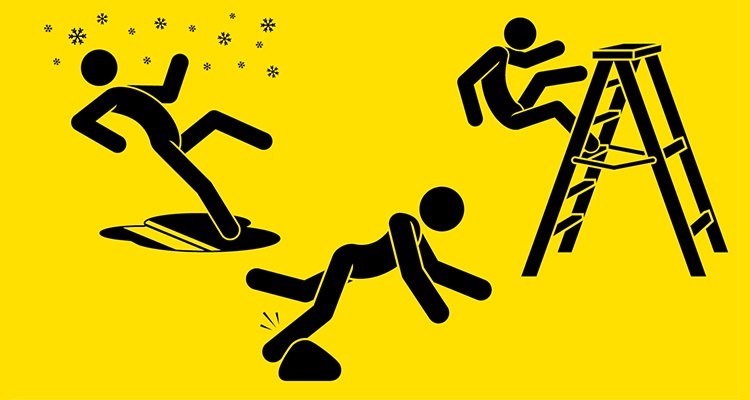While they may not seem like a leading cause of injury, slips, trips and falls are among the most dangerous hazards we face on the job:
- In 2022, 16 percent of all accidental deaths were the result of slips, trips and falls (Source: Bureau of Labor Statistics)
- A worker died every 96 minutes from a work-related injury in 2022 (Source: Bureau of Labor Statistics)
- Slips and falls are the leading cause of workers’ compensation claims and are the leading cause of occupational injury for people aged 55 years and older. (source: National Floor Safety Institute).
One reason is that the cause is often commonplace objects that are all around us. All it takes is a misplaced box. A slick floor after customers track in the wet weather. Or a spill from a product on the shelf. Many of us work around these hazards all day long without even noticing, which is why paying extra attention could save you or a fellow coworker from serious injury.
To avoid injury, look out for the following hazards your workplace:
- Walkway surface spills involving oil, water and other liquids.
- Weather-related hazards such as snow, ice and wet surfaces from rain.
- The use of inappropriate footwear.
- Walkway surfaces that are in disrepair.
- Walking surfaces that are too slick or smooth, not allowing adequate footwear traction.
- Clutter around workspaces or in walking paths or aisles.
- Employers failing to train workers about how to avoid slips, trips, and falls.
Your employer is ultimately responsible for maintaining a safe work environment without dangers that can lead to slips, trips and falls. Under the U.S. Occupational Safety and Health Administration (OSHA) Act of 1970, employers are responsible for providing safe and healthful workplaces for their employees.
Your workplace should take the following preventive measures recommended by OSHA:
- Keep floor surfaces clean and clear.
- Ensure that wet floor signs are posted as needed, and maintain proper drainage.
- Maintain clear aisles and prevent obstructions.
- Ensure that walkway surfaces are in good repair.
- Report and clean up spills immediately.
- Provide non-slip shoes and mats in wet surface areas.
- Minimize carpet and matting trip hazards.
- Use frequent housekeeping procedures and provide adequate lighting in poorly lit areas such as halls and stairways.
- Maintain and eliminate uneven floor surfaces.
In addition, if you have to work outside, OSHA requires employers to ensure that snow and ice are cleared from walking surfaces — and that deicer is spread — as quickly as possible after a winter storm. When walking on snow or ice is unavoidable, your employer is required to train you and your coworkers to wear footwear that has good traction and insulation, and to take short steps and walk at a slower pace.
If you see a safety hazard in your workplace, please contact your shop steward or union representative and inform your supervisor of the safety hazard right away before anyone gets hurt.

